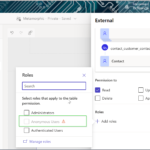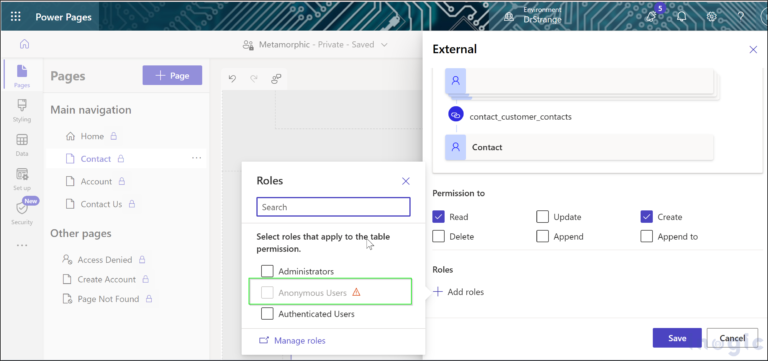Who doesn’t have a favorite pizza order? Whether it’s sausage and green pepper, all veggie, or the perfect ratio of sauce and cheese, the formula for a crowd-pleaser is in the just-right combination of toppings. Add too many and it’s tough to focus on any of the flavors (we’ll leave the pineapple debate for another day).
Similarly, a solid sales compensation plan is about striking the right balance. Overcomplicate a sales compensation plan, and you’re left with sales reps who aren’t clear on their goals or hungry to hit their quota. Too simple and you’re not taking gradations in performance, experience, or skill level into account.
What you’ll learn:
Tee up reps for success
Use Sales Programs to pair the right compensation with outcome-based training in the flow of work so reps can deliver results quickly.


What is sales compensation?
Sales compensation is the mix of pay and rewards that sellers receive based on their job performance. It includes their regular salary — typically calculated as annual pay — and other financial incentives, like commissions for sales and bonuses for reaching targets. These aim to motivate and reward effective sales efforts.
What are sales compensation plans?
Sales compensation plans are detailed guides that break down how sellers earn their pay. These plans usually specify base salary, commission rates for sales made, and bonuses for hitting or exceeding sales targets. They can also include other incentives like profit sharing or stock options.
Sales compensation plans are commonly based on specific goals like the number of deals closed, revenue targets hit, or customer retention rates achieved. Essentially, these plans map out how a sales team’s performance is rewarded and how it serves the broader goals of the company.
Why are sales compensation plans important?
Would you be willing to take a job without knowing what to expect for earnings? If you don’t have a clear compensation plan, that’s exactly what you’re asking sales reps to do. If you want to attract and retain talented salespeople, it’s crucial to be fair and transparent about their pay.
Our State of Sales report found the top reason sales reps want to leave their job is unrealistic sales targets. The number two reason is uncompetitive pay/benefits. A Pew Research Center report points to inadequate pay as the main reason for leaving a job, according to 56% of employees. This shows how crucial it is for your company to get your sales compensation plan right.
What is the purpose of a sales compensation plan?
A well-designed sales compensation plan does more than just outline potential earnings. It sets clear expectations, inspires your team, and drives them toward individual and organizational goals. This clarity in compensation fosters a stable and focused team, ensuring everyone is working toward the same objectives. It’s not just about paying salaries; it’s about creating an environment where salespeople feel valued, which in turn helps drive business success.
Common sales compensation plan terms
As you begin to develop your organization’s sales compensation plan, you’ll run across various terms and concepts. Here are some that are helpful to know:
Sales quota: A sales quota is a specific sales target that a salesperson needs to achieve within a set period, such as a month or quarter. For example, if a sales rep has a quota of $100,000 in sales for a quarter, they need to sell enough products or services to meet or exceed that amount.
Sales accelerators: Sales accelerators are incentives that increase a salesperson’s commission rate once they surpass their sales quota. For instance, a rep might earn a 5% commission on sales, but if they exceed their quota by 20%, their commission might increase to 7% on all sales beyond that quota.
Sales decelerators: Sales decelerators decrease the commission rate when a salesperson fails to meet their minimum quota. If a salesperson only achieves 75% of their quota, their commission rate might be reduced from 5% to 3% on those sales.
Clawbacks: Clawbacks occur when a salesperson must return a portion of their commission due to specific events. For example, if a rep earns a commission for a sale but the customer cancels the order within a month, the rep might have to return the commission they received for that sale.
On-target earnings (OTE): OTE refers to the total compensation a salesperson can expect to earn if they meet their sales targets. It includes both their base salary and expected commissions. For instance, if a sales role has an OTE of $70,000 per year, it means the rep can expect to earn this amount in total, provided they hit their sales goals.
Sales performance incentive fund (SPIF) or sales contests: These are additional incentives designed to motivate salespeople over a short period. A company might offer a bonus (SPIF) for the first three salespeople who reach a certain sales target within a month, like a $500 bonus for selling a new product line.
Commission vs. bonus: Commission is a payment based on the amount of sales a person makes, often noted as a percentage. For example, a 5% commission on a $1,000 sale would be $50. A bonus, on the other hand, is a fixed reward for achieving specific goals, unrelated to the amount of sales. For instance, a salesperson might receive a $200 bonus for signing up 10 new customers, regardless of the total sales value.
Get articles selected just for you, in your inbox
Types of sales compensation plans
Sales compensation plans can look pretty different from one company to another, depending on the sales team’s structure, their resources, and the company’s goals. Some companies might give their salespeople a bigger regular salary, while others might put more emphasis on earning commissions. Here are the common formulas:
Salary + commission: Salary plus commission is one of the most common ways to pay sales reps. It combines a base salary with extra earnings from commissions. This mix offers salespeople a reliable income, plus the chance to earn more based on how much they sell. It’s a win-win for businesses, too, as it attracts driven salespeople. The commission rate usually depends on the job’s complexity and the salesperson’s role. For example, roles with less customer influence or overall complexity typically have lower commission rates. In most cases, the total earnings for a rep split salary and commission 60/40 (60% base salary and 40% commission), but it can vary. For example, it might be 70/30 for more complex sales roles where the rep needs to educate the customer about the product.
Fixed percentage-based commission: This plan pays sales reps a set percentage of each sale they make. It’s straightforward: Sell more, earn more. For instance, if the commission is 5%, and a rep sells $1,000 worth of products, they earn $50. It’s simple and predictable.
Tiered commission: In a tiered commission structure, the commission rate increases as salespeople hit higher sales levels. It’s kind of like a game where each level up brings greater rewards. For example, a rep might earn 5% on initial sales, but this could jump to 7% once they surpass a certain sales amount. It’s great for motivating reps to push their limits.
Bonus plan: A bonus plan offers additional pay for meeting specific targets or completing certain tasks. Unlike commission, bonuses are fixed amounts given for specific achievements, like closing a certain number of deals or hitting a sales milestone. It’s a direct way to incentivize particular goals.
Territory volume: In this plan, commissions are based on the total sales within a rep’s assigned territory. It encourages reps to maximize sales across their entire area, not just individual clients. For example, a rep might earn a percentage of the total sales in their region, promoting a sales strategy that reaches a broader clientele.
Set rate commission: Sales reps earn a fixed amount for each item sold or deal closed in a set rate commission plan. It’s very straightforward — sell a product, earn a set amount. This works well for products or services with consistent pricing, encouraging volume selling.
Relative commission: This plan bases a rep’s commission on their performance relative to their peers. It’s competitive, as reps earn more by outperforming others. For instance, the top performers in a sales team might earn higher commissions than those with lower sales, fostering a competitive environment.
5 steps to build an effective sales compensation plan
Sales compensation isn’t a one-size-fits-all deal. Every sales team member deserves a compensation plan that’s tailored just for them, taking into account their specific role, experience, how long their sales cycle usually is, and the type of deals they handle. As Justin Lane, VP of professional services at Forma.ai, put it: “A strong compensation plan should be aligned with company goals, simple to understand and communicate, and give sales reps and managers target objectives to work toward.”
1. Understand and prioritize the goals for your business
Before designing a compensation plan, identify what you want to achieve. Whether it’s increasing overall sales, keeping more customers (reducing churn), getting more business from current customers, launching new products, or changing existing customer contracts, your plan should encourage these outcomes. For instance, if expanding revenue from current customers is a goal, the plan could include bonuses for upselling.
2. Build a sales compensation plan team
When building comp plans, the more departments you involve, the more people trust the plan. Involving people from different departments, like finance, sales, and operations, makes your plan more balanced and trusted. Different perspectives help create a plan that’s realistic and aligns with company goals. Involving sales reps in the process ensures they understand and buy into the plan, too.
3. Choose your type of sales compensation plan
A balanced compensation plan includes both a stable base salary and performance-based incentives. Refer to the list of sales compensation plan types to see common examples. Whichever one you choose, your sales compensation plan should be sustainable, meaning the goals set for reps should be achievable and in line with industry standards. Of course, you should avoid setting targets that are too low or too high, as this can lead to high turnover or unsustainable business practices. Regularly review your plan to ensure it aligns with industry standards and is fair for all reps.
4. Balance plan components and weights
Your plan should be easy to understand and focus on achievable targets. Tailor incentives to each sales role, ensuring that reps are rewarded for their individual performance and contributions. Incorporating team goals can also motivate collective effort, but the primary focus should be on individual achievements.
5. Communicate and monitor your plan
Transparency in compensation is crucial. Without a doubt, you need to make sure your sales team understands how and why they’re paid in a certain way. Regular communication and adjustments are necessary to keep the plan effective and relevant. Involve your team in discussions about the compensation plan to ensure it meets their needs and aligns with business goals.
Trending Articles

3 Ways Generative AI Will Help Marketers Connect With Customers
3 min read

Skill Up on AI with Trailhead
6 min read
4 sales compensation plan examples to get you started
Each member of the sales team should have a tailored compensation plan that reflects their specific role, level of experience, the usual duration of their sales cycle, and the nature of the deals they work on. As you begin to develop your organization’s sales compensation plan, you will encounter various terms and concepts, which will differ based on the structure you choose for your plan. Here are some examples:
1. Sales development rep (SDR) compensation plan
- What: Usually a mix of a lower base salary and commission or bonuses based on activities like lead generation.
- When to use it: For roles focused on generating leads and qualifying prospects, rather than closing sales.
- Why: Encourages SDRs to focus on high-quality lead generation and meeting lead targets.
- How to calculate: The compensation might include a base salary plus a bonus for each qualified lead or meeting set. For example, a bonus of $50 for every qualified lead passed to the sales team.
2. Sales rep commission compensation plan
- What: Typically a balanced mix of base salary and commission based on sales closed.
- When to use it: For standard sales roles focused on closing deals with clients.
- Why: Provides motivation to close deals while offering income stability.
- How to calculate: A combination of a steady salary with a commission, such as 5% of the sales value for each deal closed.
3. Sales manager compensation plan
- What: A combination of a base salary with performance-based bonuses and/or a percentage of their team’s total sales.
- When to use it: For management roles where the individual is responsible for leading a sales team.
- Why: Balances the need for a stable income with incentives for maximizing team performance.
- How to calculate: The manager receives a fixed base salary plus bonuses based on team key performance metrics (KPIs). For example, a 5% bonus on the total sales volume generated by their team, or specific bonuses for achieving team targets.
4. VP of sales compensation plan
- What: A higher base salary combined with significant performance bonuses or profit-sharing, and possibly stock options.
- When to use it: For senior roles overseeing the entire sales department.
- Why: Reflects the strategic importance and higher responsibilities of the role, incentivizing overall sales department performance.
- How to calculate: A substantial base salary with bonuses linked to departmental or company-wide sales performance, like 10% of the increase in total sales revenue under their leadership.
Build your team with a strong sales compensation strategy
A successful sales compensation plan takes careful consideration and strategy. With a team of key players, you can easily build a compensation plan. Ultimately, the plan you choose should empower your sales teams, benefit each part of your organization, and help you outperform the competition.
Unleash growth now and boost rep efficiency
See how Sales Cloud speeds up the sales cycle with data and AI, making you more efficient at every step.














